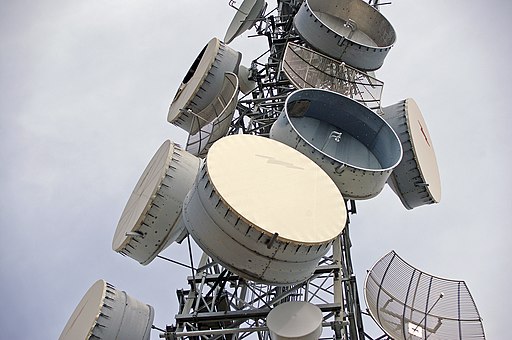 |
| Parabolic antennas on a telecommunications tower on Willans Hill, Wagga Wagga. Photo: Bidgee/CC BY-SA 2.5 AU |
I was quite pleased to participate in a joint publication with a policy practitioner on Australia's telecommunications infrastructure. It is one thing to sit on one's scholarly couch and critique what others do, and quite another to be the "man in the arena" as Theodore Roosevelt (1910) once said.
Fifteen years ago I commenced my PhD thesis on comparing telecommunications outcomes in Canada and Australia. Based on my findings, it was clear that the decisions made in Australia would stifle private sector competition in fixed line broadband services.
Today, fixed line broadband services remain costly and poor as 5G services bring ever faster speeds at ever cheaper prices. I routinely run my entire household and all its devices off my Samsung S20 5G Ultra phone on 4G and 5G networks (depending on whether I am in Sydney or Gunning) at much faster speeds than either the NBN or ADSL 2+ services available in the respective areas.
Today, my latest work has been published in the Australia Journal of Social Issues alongside an excellent outline of the Australian policy perspective. Australia is fortunate to have such experts in the field and time and again Australia's performance in international policy issues proves the efficacy of our unique "Washminster" political system.
I have renewed faith in our system due to recent events and I say without reservation that it is indeed the best in the world.
See my contribution to the article "Telecommunications Infrastructure in Australia" in the latest issue of the Australian Journal of Social Issues.
Reference:
Madsen, A. and de Percy, M.A. (2020). Telecommunications Infrastructure in Australia. Australian Journal of Social Issues, 55(2), pp. 218-238. DOI: 10.1002/ajs4.121.
 Donate
Donate






No comments
Post a Comment